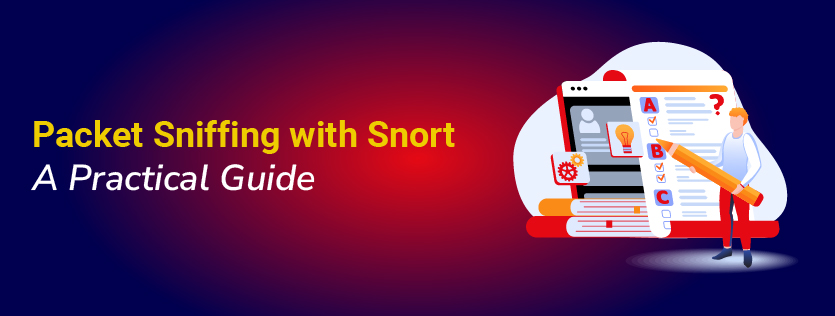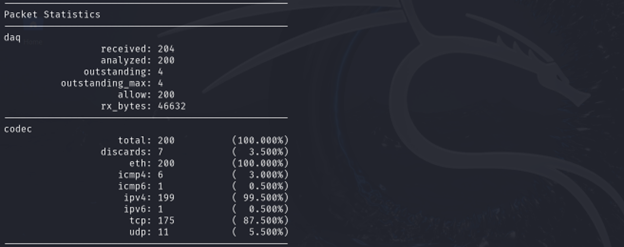Packet Sniffing with Snort: A Practical Guide
You might think your network works fine, emails are sent, websites are loaded, and video calls are correctly connected. But behind the scenes, countless packets are flying around, carrying everything from login credentials to memes. If you want to monitor that traffic, understand it, or even find malicious activity as it happens, packet sniffing is your starting point.

One of the top tools for this? Snort. It is free, powerful, and widely used by cybersecurity professionals, IT admins, and tech enthusiasts.
In this guide, you will learn how to use Snort for packet sniffing, from installation to capturing and analyzing live traffic.
What is Packet Sniffing?
Packet sniffing is the process of capturing data packets as they move across a network. It is like digital eavesdropping, but legal, when you are monitoring your own network. It is essential for:
- Diagnose slow or buggy network behavior
- Detect unauthorized access attempts
- Monitor bandwidth usage
- Audit what apps or devices are doing
It is also the foundation of more advanced network security practices like intrusion detection and threat hunting.
What is Snort?
Snort is a powerful Network Intrusion Detection System (NIDS) developed by Cisco. It can:
- Capture and log packets
- Detect suspicious or malicious traffic
- Trigger alerts based on rules
While many use Snort as a full-fledged IDS, it also doubles as a lightweight and efficient packet sniffer.
Installing Snort
On Ubuntu/Debian
| sudo apt update |

| sudo apt install snort |

During installation, you will be asked to set your HOME_NET. That is your local network range, usually something like 192.168.1.0/24.
This guide uses Snort 3.x syntax. If you’re using Snort 2, some commands and config paths may differ.
To check your Snort version, use the command: snort -V

Choosing the Network Interface
Snort defaults to your primary network interface, but you can explicitly choose one with -i:
To sniff on a specific interface:
| sudo snort -i eth0 |
- -i eth0: Use interface eth0 (replace with your active interface name).


To find your active interfaces:
| ip a |

Logging Packets
If you want to save what you sniff for later analysis.
| sudo snort -i eth0 -L pcap |
- -i eth0: Sniff on interface eth0.
- -L pcap: Log packets to a pcap file. The filename will be log.pcap.TIMESTAMP

This creates timestamped log files you can analyze later using tools like tcpdump or Wireshark.
Command for seeing the sniffed packets
| wireshark log.pcap.1744806427 |

Snort vs. Wireshark
| Feature | Snort | Wireshark |
| Primary Use | Intrusion detection and prevention | Network protocol analysis and troubleshooting |
| Type | IDS/IPS tool with packet-sniffing capabilities | Packet analyzer/sniffer |
| Real-time Detection | Yes, uses rules to detect threats | No, primarily for capturing and analyzing data |
| Interface | Command-line based | GUI-based (also has command-line tools) |
| Performance | Lightweight, can run on low-resource systems | Heavier, especially with large captures |
| Output | Alerts and logs based on rules | Detailed packet-level breakdown |
| Best For | Monitoring threats and enforcing policies | Deep dive into packet contents and protocols |
Why Use Snort for Sniffing?
Snort is not just for detection rules and alerts; it is also a reliable sniffer. Here’s why it’s a good choice:
- Terminal-based: No UI overhead, perfect for remote servers or SSH sessions.
- Customizable: You can write rules later to detect specific patterns.
- Lightweight: Doesn’t eat system resources.
- Scalable: Use it for sniffing now and grow into full IDS mode later.
Limitations to Keep in Mind
Snort is great—but not perfect.
- It’s not as intuitive as Wireshark for deep dive analysis.
- Filtering output requires command-line comfort.
- Log files can grow fast—monitor your storage.
- No GUI means a steeper learning curve for beginners.
In Conclusion
Packet sniffing is often the first step in understanding, securing, and managing a network. With Snort, you get more than just a sniffer; you get a tool that can grow with your skills. If you prefer working in the terminal and want a tool that can scale from passive monitoring to active defense, it is worth learning. Start with simple sniffing, then move into writing custom detection rules.
How Can InfosecTrain Help?
InfosecTrain’s hands-on, instructor-led courses like CompTIA Security+, CEH v13 AI, and SOC Analyst are designed to build real-world skills through practical labs and expert guidance. These courses take you from the basics of packet sniffing to advanced traffic analysis using tools like Snort and Wireshark. Participants will learn how to capture, inspect, and interpret network packets, identify suspicious behavior, and respond to threats through step-by-step practical training. These courses build a strong basis for understanding how modern network security tools detect and counter intrusions.
TRAINING CALENDAR of Upcoming Batches For Security+ SY0-701
| Start Date | End Date | Start - End Time | Batch Type | Training Mode | Batch Status | |
|---|---|---|---|---|---|---|
| 03-May-2025 | 08-Jun-2025 | 19:00 - 23:00 IST | Weekend | Online | [ Open ] | |
| 25-May-2025 | 05-Jul-2025 | 19:00 - 23:00 IST | Weekend | Online | [ Open ] | |
| 28-Jun-2025 | 03-Aug-2025 | 19:00 - 23:00 IST | Weekend | Online | [ Open ] | |
| 26-Jul-2025 | 31-Aug-2025 | 19:00 - 23:00 IST | Weekend | Online | [ Open ] |


 1800-843-7890 (India)
1800-843-7890 (India)